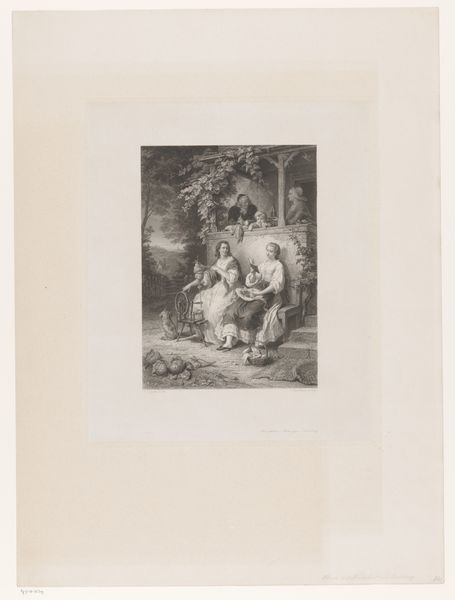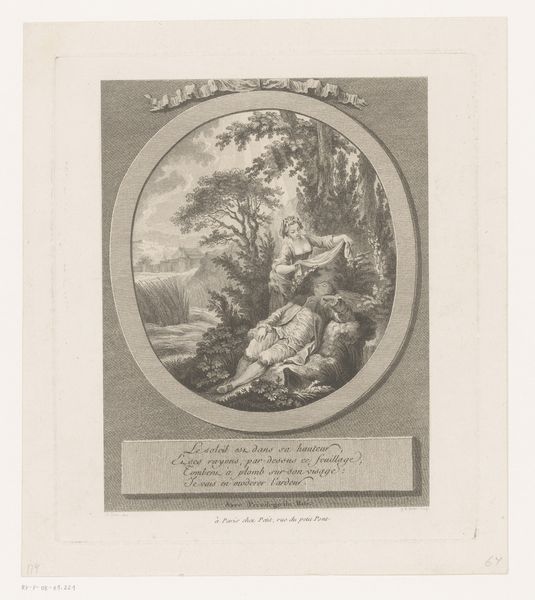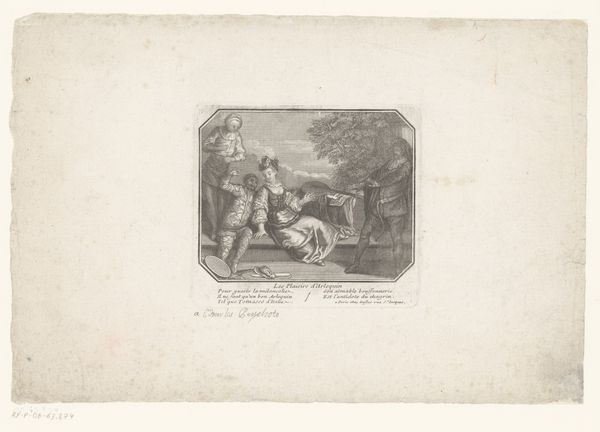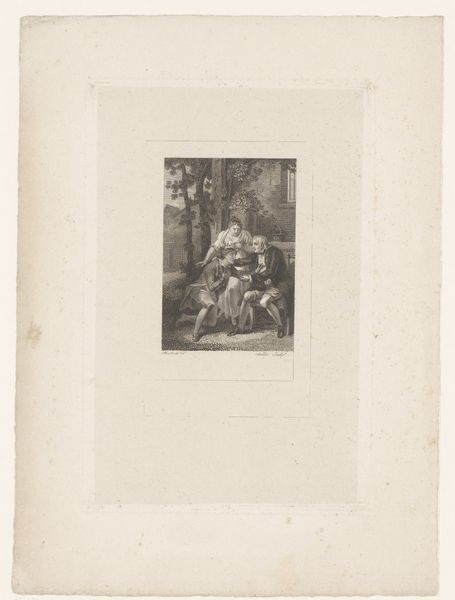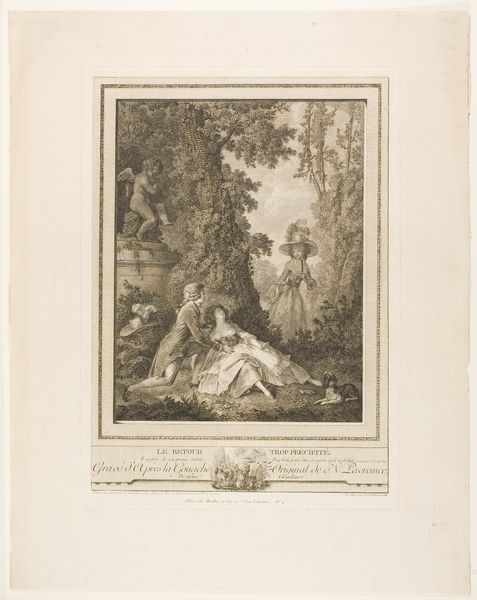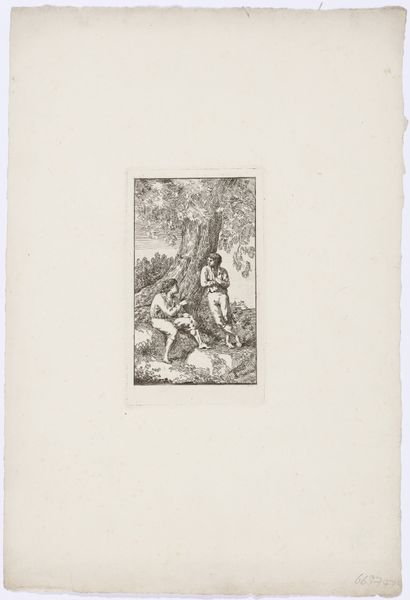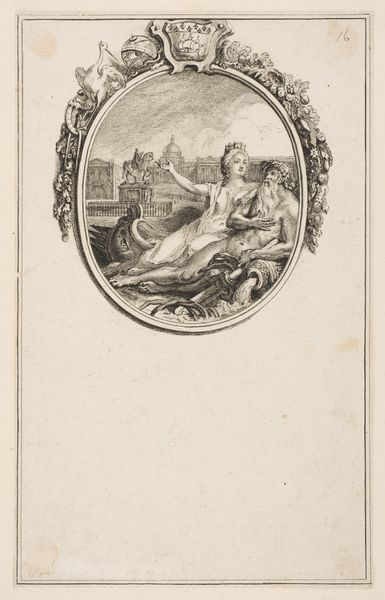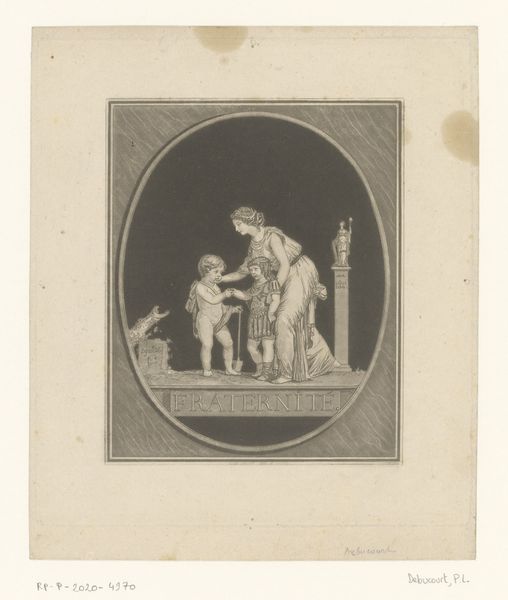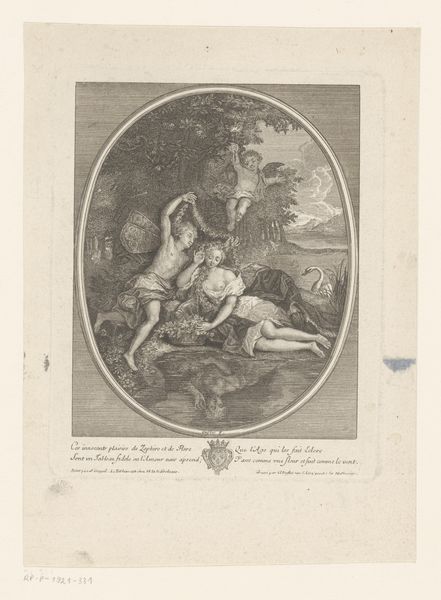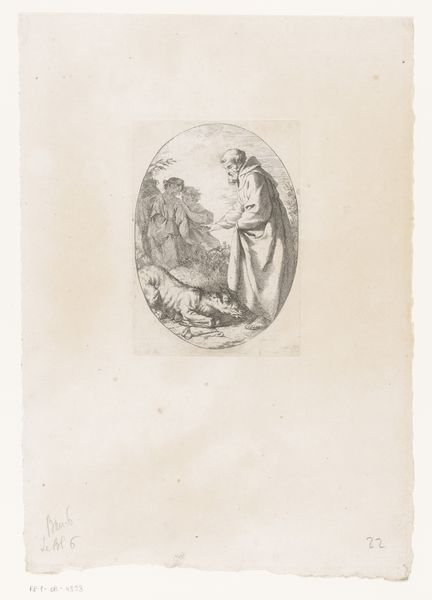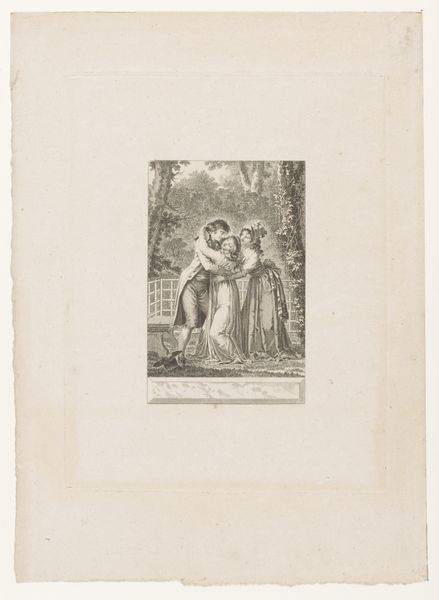
print, engraving
# print
#
landscape
#
figuration
#
genre-painting
#
academic-art
#
engraving
Dimensions: 80 mm (height) x 61 mm (width) (plademaal)
Editor: Here we have Gerhard Ludvig Lahde’s "Oval vignet med to drenge og en dame i en skov", an engraving from 1793. It's a small print, depicting children and a woman in a woodland scene framed by a decorative oval. I’m struck by the level of detail achieved through the engraving process. What stands out to you when you look at this, considering its materiality and context? Curator: I’m interested in the socio-economic factors that permitted the creation and consumption of this engraving. The choice of engraving itself is telling. It allows for multiple reproductions, implying a market for such images beyond a single patron. Think about the labor involved: the engraver, the printer, and the distribution networks. Who was buying this? What role did this image play in the cultural consumption of its time? Editor: So, you’re saying we should focus less on the artistic expression and more on how it was made and distributed? It’s like looking at the assembly line rather than the finished product. Curator: Exactly! Consider the materials themselves: the copper plate, the paper, the ink. These weren't universally accessible. Lahde, as an artist, depended on the infrastructures and distribution networks of printmaking. Who controlled these resources? Whose labor went into each impression? Also, how does the 'preciousness' of fine art change, knowing that this artwork has material origins rooted in specific modes of production? Editor: It's a really interesting point. The material process highlights that this image wasn't created in a vacuum. I never thought about an artwork in that way, in terms of access and infrastructure, not only aesthetics. Thank you for pointing this out! Curator: Remember, art exists within—and is made possible by—the material conditions of its time. To really understand an artwork, you need to interrogate those conditions, not simply admire its aesthetic qualities.
Comments
No comments
Be the first to comment and join the conversation on the ultimate creative platform.
